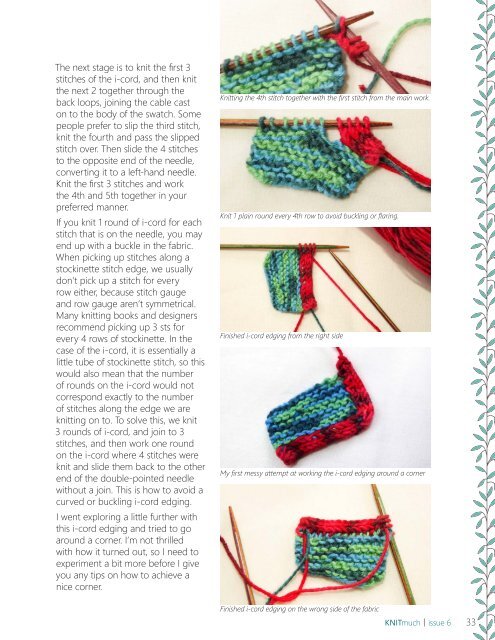KNITmuch | Issue 06
Here’s another issue you don’t want to miss! We’re talking about one of the more recent yarns Premier Toy Box, its characteristics, benefits and how perfect it is for knitting for children. We also look at non-allergenic sock yarns, and conversations about brioche knitting and knitting one stitch below using the luxurious Bella Cash. You’ll want to know about self striping yarns and examine what it’s like to knit with gradient striping yarn, Sweet Roll and Red Heart With Love Stripes and know the difference. Plenty of patterns to explore using Red Heart Soft and Evermore yarns.
Here’s another issue you don’t want to miss! We’re talking about one of the more recent yarns Premier Toy Box, its characteristics, benefits and how perfect it is for knitting for children. We also look at non-allergenic sock yarns, and conversations about brioche knitting and knitting one stitch below using the luxurious Bella Cash. You’ll want to know about self striping yarns and examine what it’s like to knit with gradient striping yarn, Sweet Roll and Red Heart With Love Stripes and know the difference. Plenty of patterns to explore using Red Heart Soft and Evermore yarns.
You also want an ePaper? Increase the reach of your titles
YUMPU automatically turns print PDFs into web optimized ePapers that Google loves.
The next stage is to knit the first 3<br />
stitches of the i-cord, and then knit<br />
the next 2 together through the<br />
back loops, joining the cable cast<br />
on to the body of the swatch. Some<br />
people prefer to slip the third stitch,<br />
knit the fourth and pass the slipped<br />
stitch over. Then slide the 4 stitches<br />
to the opposite end of the needle,<br />
converting it to a left-hand needle.<br />
Knit the first 3 stitches and work<br />
the 4th and 5th together in your<br />
preferred manner.<br />
If you knit 1 round of i-cord for each<br />
stitch that is on the needle, you may<br />
end up with a buckle in the fabric.<br />
When picking up stitches along a<br />
stockinette stitch edge, we usually<br />
don’t pick up a stitch for every<br />
row either, because stitch gauge<br />
and row gauge aren’t symmetrical.<br />
Many knitting books and designers<br />
recommend picking up 3 sts for<br />
every 4 rows of stockinette. In the<br />
case of the i-cord, it is essentially a<br />
little tube of stockinette stitch, so this<br />
would also mean that the number<br />
of rounds on the i-cord would not<br />
correspond exactly to the number<br />
of stitches along the edge we are<br />
knitting on to. To solve this, we knit<br />
3 rounds of i-cord, and join to 3<br />
stitches, and then work one round<br />
on the i-cord where 4 stitches were<br />
knit and slide them back to the other<br />
end of the double-pointed needle<br />
without a join. This is how to avoid a<br />
curved or buckling i-cord edging.<br />
I went exploring a little further with<br />
this i-cord edging and tried to go<br />
around a corner. I’m not thrilled<br />
with how it turned out, so I need to<br />
experiment a bit more before I give<br />
you any tips on how to achieve a<br />
nice corner.<br />
Knitting the 4th stitch together with the first stitch from the main work.<br />
Knit 1 plain round every 4th row to avoid buckling or flaring.<br />
Finished i-cord edging from the right side<br />
My first messy attempt at working the i-cord edging around a corner<br />
Finished i-cord edging on the wrong side of the fabric<br />
<strong>KNITmuch</strong> | issue 6<br />
33

















